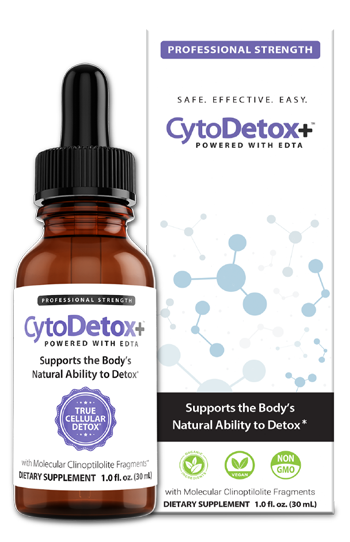Cadmium, a toxic heavy metal, is a silent threat that may not be on everyone’s radar, but its detrimental effects on human health are significant. Although cadmium poisoning may seem uncommon, it can be found in many individuals due to exposure from various sources.
This article explores the lesser-known aspects of cadmium toxicity, shedding light on its potential negative impacts on the human body, including kidney damage, bone demineralization, respiratory problems, cardiovascular effects, cancers, and more. We will delve into where cadmium can be found, including in tobacco smoke, food contamination, occupational settings, industrial discharges, and batteries.
Understanding Cadmium Toxicity[1]
Cadmium is a naturally occurring metal used in various industrial processes and consumer products. While it may not receive as much attention as other heavy metals like lead or mercury, cadmium toxicity is a real and concerning issue. Cadmium exposure can occur through inhalation, ingestion, or dermal contact, making it a pervasive environmental pollutant that poses health risks to individuals worldwide.
Negative Effects of Cadmium Exposure[2]
Kidney Damage
One of the most well-documented effects of cadmium toxicity is kidney damage. Cadmium accumulates in the kidneys over time and can lead to a condition called cadmium nephrotoxicity. This can result in kidney dysfunction, decreased glomerular filtration rate, and, ultimately, kidney disease. Chronic exposure to cadmium is particularly problematic as it may lead to irreversible kidney damage.
Bone Demineralization
Cadmium can interfere with the body’s calcium metabolism, leading to bone demineralization and an increased risk of osteoporosis. It competes with calcium for absorption in the intestines, reducing the amount of calcium available for bone health. Over time, this can weaken bones, making them more prone to fractures and other skeletal issues.
Respiratory Problems
Inhalation of cadmium particles or fumes can cause respiratory problems. Cadmium exposure has been linked to lung damage, chronic obstructive pulmonary disease (COPD), and lung cancer. Smokers are at a particularly high risk as cadmium is present in tobacco smoke, compounding the health risks associated with smoking.
Cardiovascular Effects
Recent research has indicated that cadmium exposure may also have adverse cardiovascular effects. It has been associated with increased blood pressure, atherosclerosis, and an elevated risk of heart disease. The exact mechanisms underlying these effects are still under investigation, but the evidence suggests that cadmium may contribute to cardiovascular problems.
Cancer
Cadmium is classified as a known human carcinogen by several health organizations, including the International Agency for Research on Cancer (IARC). Prolonged exposure to cadmium has been linked to various cancers, including lung cancer, prostate cancer, and bladder cancer. The carcinogenic potential of cadmium underscores the importance of minimizing exposure.
Sources of Cadmium Exposure[1]
Various sources contain cadmium, making it important to be aware of potential exposure pathways:
Tobacco Smoke:
Smoking is a significant source of cadmium exposure, as tobacco plants readily absorb cadmium from the soil. Smokers not only inhale cadmium-laden smoke but also introduce it into their bodies through the mucous membranes of the mouth.
Food Contamination:
Cadmium can contaminate food through the soil, water, and air. It can accumulate in crops like rice, leafy vegetables, and shellfish. Consumers may unknowingly ingest cadmium through their diets.
Occupational Exposure:
Certain occupations, such as those in the metal industry, battery manufacturing, and mining, pose a higher risk of cadmium exposure for workers. Proper safety measures and protective equipment are essential in these settings to reduce exposure.
Industrial Discharges:
Industrial processes release cadmium into the environment, contaminating soil and water. Efforts to control industrial discharges are crucial in preventing environmental contamination.
Batteries:
Rechargeable nickel-cadmium batteries also contain cadmium. Proper disposal and recycling of such batteries are essential to prevent environmental contamination.
Cadmium toxicity is a serious concern for human health, with potential repercussions ranging from kidney damage and bone demineralization to respiratory problems, cardiovascular effects, and various cancers.
Understanding the sources of cadmium exposure, including tobacco smoke, food contamination, occupational settings, industrial discharges, and batteries, is crucial for minimizing its impact on individuals and the environment.
To safeguard health, it is essential to raise awareness about cadmium toxicity, promote responsible industrial practices, and encourage lifestyle choices that reduce exposure, such as quitting smoking and consuming foods with lower cadmium content. By taking proactive measures, we can protect ourselves and future generations from the hidden dangers of cadmium.
CytoDetox®
CytoDetox® Liposomal Zeolite Clinoptilolite with Fulvates is a cutting-edge way to support the removal of environmental toxins like heavy metals, chemicals, pesticides, and biotoxins at the cellular level, safely and 100% naturally. CytoDetox contains Patented Molecular Clinoptilolite Fragments that come from zeolites. Zeolites (Clinoptilolite) are natural minerals formed from fossilized volcanic ash and seawater that are known as nature’s detoxifier for the environment.
Liposomal Zeolite Clinoptilolite with Fulvates is a cutting-edge way to support the removal of environmental toxins like heavy metals, chemicals, pesticides, and biotoxins at the cellular level, safely and 100% naturally. CytoDetox contains Patented Molecular Clinoptilolite Fragments that come from zeolites. Zeolites (Clinoptilolite) are natural minerals formed from fossilized volcanic ash and seawater that are known as nature’s detoxifier for the environment.
Powered by 2-Patented Technologies that 1) completely clean the natural detoxification cages, 2) create a size range distribution to support cellular, blood, and gut detox; 3) Liposomal technology to ensure cellular delivery…
CytoDetox is the most trusted brand by health professionals for cellular detoxification support.
CytoDetox provides an all-inclusive detox support system with water-soluble molecular clinoptilolite fragments, larger clinoptilolite molecules, and fulvates with the ability to travel beyond the colon and liver, supporting your body’s natural ability to detoxify throughout every cell.
References:
- Andrew L. Koons; Venkat Rajasurya.Cadmium Toxicity.https://www.ncbi.nlm.nih.gov/books/NBK536966/
- Giuseppe Genchi, Maria Stefania Sinicropi, Graziantonio Lauria,1 Alessia Carocci,and Alessia Catalano. The Effects of Cadmium Toxicity.2020 Jun; 17(11): 3782.May 26. doi: 10.3390/ijerph17113782.PMCID: PMC7312803.PMID: 32466586


